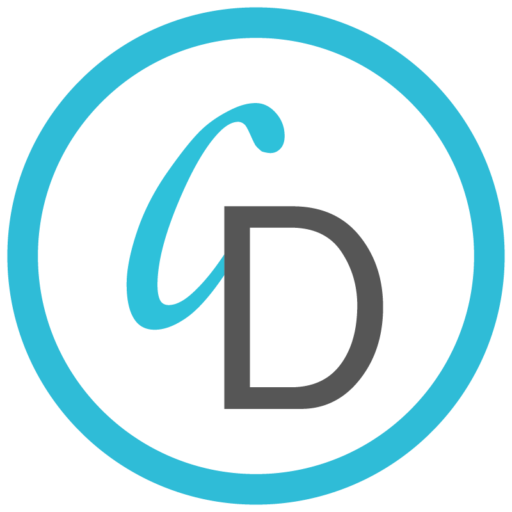our blog
4 Tips for Effective Major Donor Outreach & Engagement
Major gifts are the largest donations your nonprofit receives, empowering you to make great strides in moving your mission forward. To actively seek out these gifts, you need to conduct thorough prospect research, a process in which you identify potential major donors both within and outside your current organization’s community.
But identifying your major giving prospects is only half the battle. You also need to put in the work to get to know your donors, invite them to be involved with your organization, and make an initial donation request when the time is right.
In this quick guide, we’ll help you get started by covering four tips for effective major donor outreach and engagement:
- Use your prospect research findings to understand your prospects.
- Communicate regularly.
- Invite major donor prospects to engage in a number of ways.
- When the time is right, make a donation request.
As you handle the outreach and engagement processes with care, you’ll be better equipped to not only secure major gifts from new donors but also build long-lasting relationships that will lead to more support and involvement over time. Let’s begin.

During the prospecting process, you gathered a lot of information about your individual prospects. Now that you’ve used the information to identify potential major donors, don’t let it go to waste as you begin getting to know them. Look back over your prospect research data to review your prospects’:
- Philanthropy Markers: Philanthropy markers show you that a prospect has a propensity for being involved with charitable work. These markers might include previous donations to your nonprofit or donations to other nonprofits.
- Capacity Markers: Capacity markers indicate that a prospect has the financial capacity to give a large gift. These markers may include real estate ownership, business affiliations, or political giving history.
- Affinity Markers: Affinity markers tell you your prospect has an interest in your specific cause. These markers might include nonprofit involvement history with similar organizations or personal information about hobbies, interests, and values that are connected to your mission.
According to DonorSearch, after the major donor prospect identification process, you can take the capacity, philanthropy, and affinity information you’ve gathered and begin to make a clear solicitation plan. Use the information above to get started communicating with your prospects and preparing donation requests. Note that if you use a prospect research solution with AI capabilities, you’ll be one step ahead, as this type of tool can make specific predictions about individual prospects and the strategies they’ll best respond to.

To kick off regular communication, you’ll need to first reach out and establish rapport with your new prospects. Leverage the connections they have to individuals in your organization, whether they know one of your board members or they’re related to a current donor or staff member. These individuals can make introductions for you that will help you start the communication process off right.
Once you’ve done some initial work to get to know your prospect, follow these steps:
- Set up a regular cadence based on individual prospects’ preferences. Determine when and how you’ll reach out to your prospects on a regular basis. As you decide on the cadence for each individual prospect, take into account their communication preferences. For instance, some individuals may prefer to receive regular emails from your team, while others may appreciate a phone call or invitation to coffee.
- Share updates on your work and educational materials about your cause. When you’re first establishing a relationship with a new prospect, you don’t want to ask for a donation. This will make your organization come across as “all about the money.” Instead, find natural ways to update them on current projects and initiatives, and share educational materials about your cause, like a recently-published blog post or ebook.
- Remember that you don’t always have to talk about your nonprofit. In fact, you shouldn’t! Let your conversations flow naturally, and make sure to show interest in other aspects of your prospects’ lives, whether it’s their job, family, or hobbies. This will demonstrate to your prospects that your organization cares about them on a human-to-human level.

While you’re working toward asking your prospects for an initial donation, you can still invite them to engage your work to deepen their connection to your cause. For example, you could invite your prospects to:
- Volunteer: Volunteering is a great way for your prospects to get on-the-ground experience with your mission and to see firsthand how their contributions can impact your beneficiaries for good. Be sure to offer plenty of different kinds of opportunities to volunteer, including online opportunities, to fit your prospects’ schedules.
- Attend Events: According to CharityBids, events are great relationship-building and memory-making experiences, whether you’re hosting a virtual concert or your annual gala. Invite your prospects to join in the fun and take the chance to visit with them during the event.
- Join an Advisory Committee: If you have an advisory committee for your board or for a specific project your staff members are tackling, consider inviting your prospects to be part of that committee. They will enjoy this opportunity to take on a more intensive volunteer role and may even have the chance to share their own expertise with your team, whether they’re an accountant, event planner, or marketer.
As you consider what opportunities to present to individual prospects, think back to what you already know about them. For example, you may find that one of your prospects loves to run and has completed multiple marathons. You could use this fun fact to invite that prospect to volunteer at your next charity race.

When you feel that your relationship with your prospect is strong and there’s a donation opportunity coming up that you think they will respond positively to, it’s time to make your first donation request.
Here are some tips for going about it the right way:
- Explain the Specific Need: Communicate to your prospect the donation amount you’re seeking and why you need it. For instance, you might say, “We’d like to ask you to contribute a gift of $5,000 for our healthcare organization fundraiser to help us improve our smoking cessation program.” This will demonstrate to your prospect how their donation will make an impact on your beneficiaries.
- Aim to Inspire: When making a donation request, consider telling a story to inspire your prospect to give. For instance, you might share the story of another donor who made a great impact on your organization or tell the story of a beneficiary and how their life was changed for the better because of your organization’s services.
- Provide Donation Options: Everyone prefers to give in a different way. Make clear to your prospect the many ways in which your organization can accept their donation, whether they want to give online, mail in a check, or contribute in some other way.
If your nonprofit is looking to boost its fundraising revenue, focusing on major gifts is an excellent way to do so. And while the prospect research process will take some time, don’t overlook the importance of cultivating strong relationships with your prospects once you’ve identified them. Use these four tips to get started!
Learn more about how Charity Dynamics can help increase your outreach and fundraising potential

